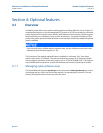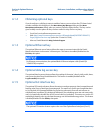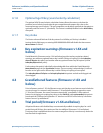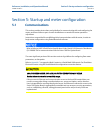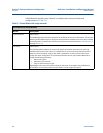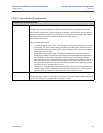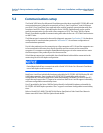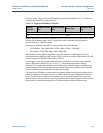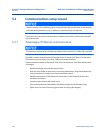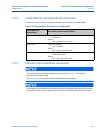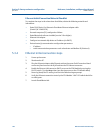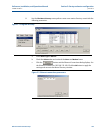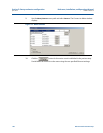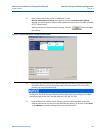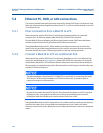
Reference, Installation, and Operations Manual Section 5: Startup and meter configuration
3-9000-743 Rev S June 2013
Communications setup 101
Ports A, B, and C support ASCII and RTU Modbus protocols (as detailed in Tab le 5 -2 ) which are
automatically detected on a per-port basis.
Modbus addresses are software configurable (from 1 to 247) on a per-port basis. Ports A and B
operate only as Modbus slaves. Port C can operate as either a Modbus slave (for general
communication) or a Modbus master.
Baud rates are software selectable on a per-port basis from the following:
• ASCII Modbus: 1200, 2400, 9600, 19200, 38400, 57600, 115000 bps
• RTU Modbus: 1200, 2400, 9600, 19200, 38400 bps
When Belden wire No. 9940 or equivalent is used, the maximum cable length for RS-232
communications at 9600 bps is 88.3 meters (250 ft.) and the maximum cable length for RS-485
communication at 57600 bps is 600 meters (1970 ft.).
Port B supports a special override mode which forces the port to use known communication
values (19200 baud, address 32) (see Section 5.7). (Note that the protocol is still auto-
detected.) This mode is expected to be used during meter commissioning (to establish initial
communication) and in the event that the user cannot communicate with the meter (possibly
due to an inadvertent communication configuration change).
The Ethernet port IP address, subnet mask, and gateway address are software-configurable. In
addition, a meter can be configured to act as a DHCP (Dynamic Host Configuration Protocol)
server. The DHCP server facility is not intended to act as a general purpose DHCP server for a
wider network. To this end, no user control is provided over the class or range of IP addresses the
unit provides. A standard twisted pair (Cat-5) cable should be used for Ethernet wiring.
Table 5-2 Supported Modbus Protocols
Modbus
Protocol
Number of Start
Bits
Number of Data
Bits
Parity Type
Number of Stop
Bits
ASCII 1 7 odd or even 1
RTU 1 8 none 1



